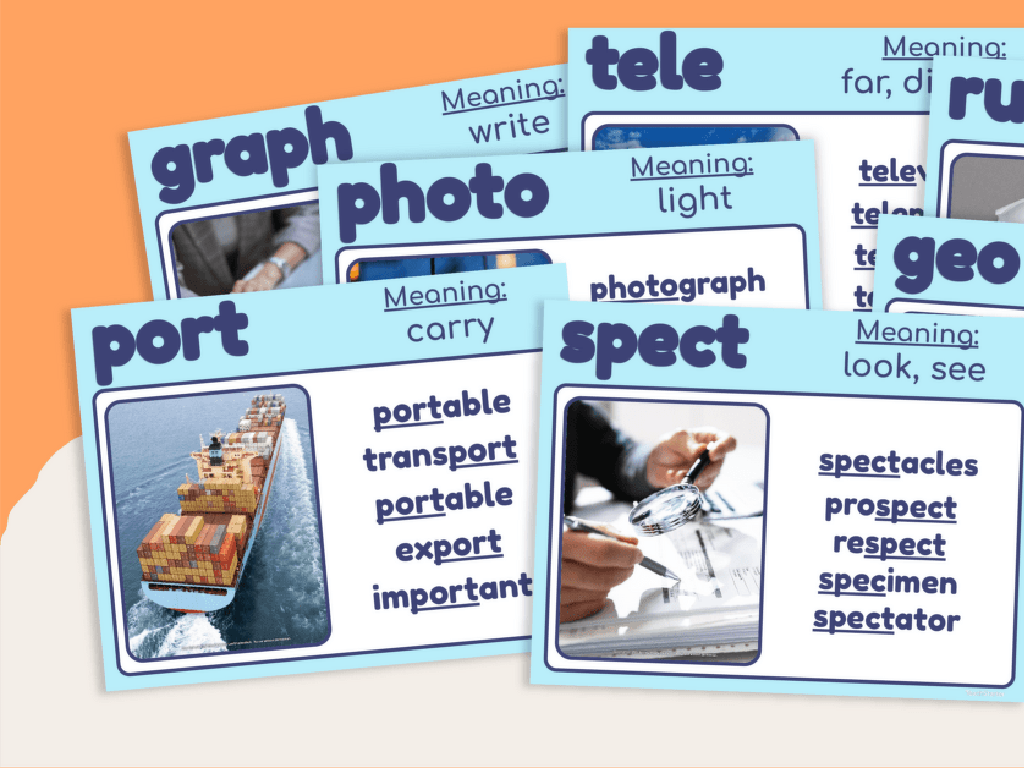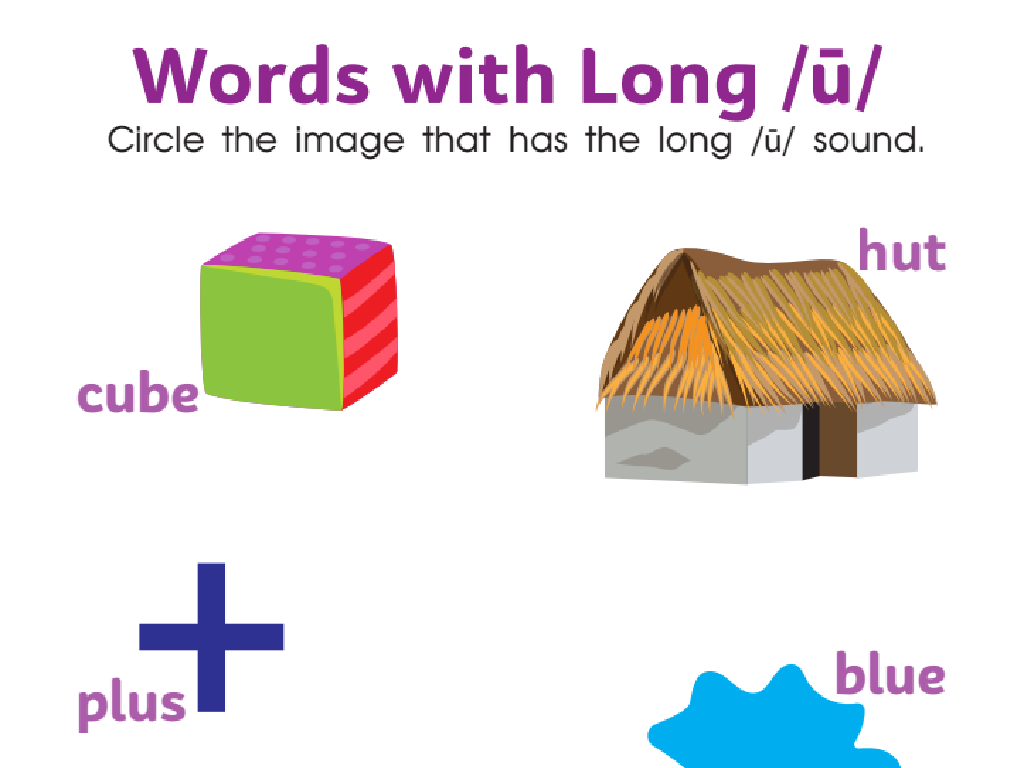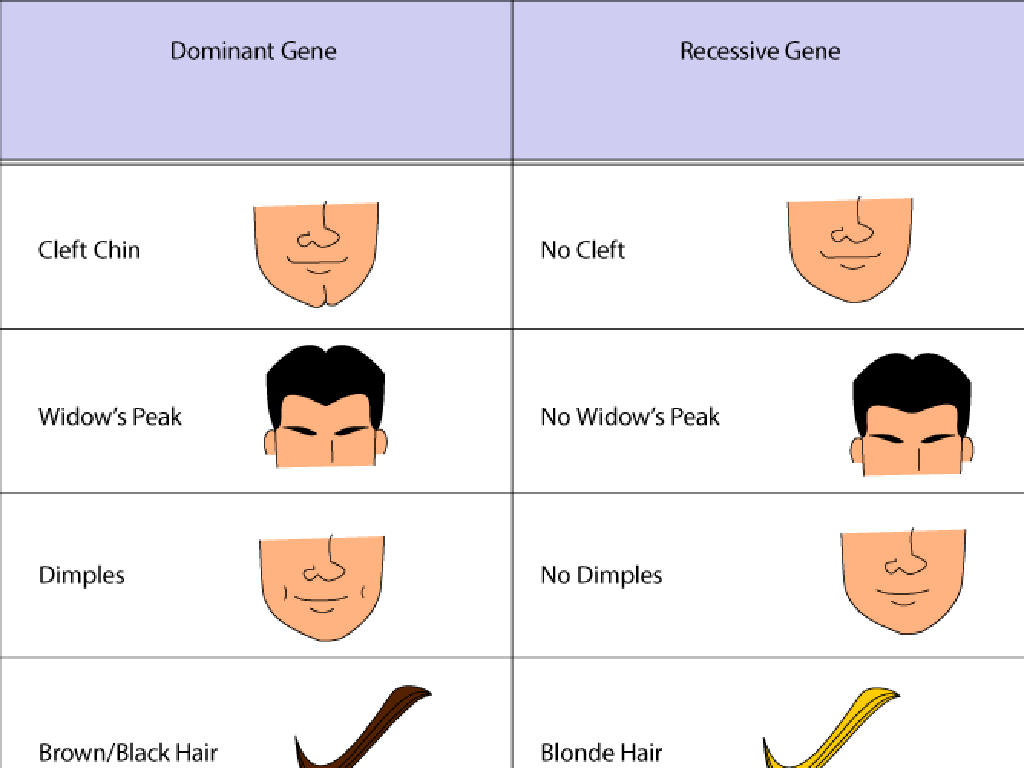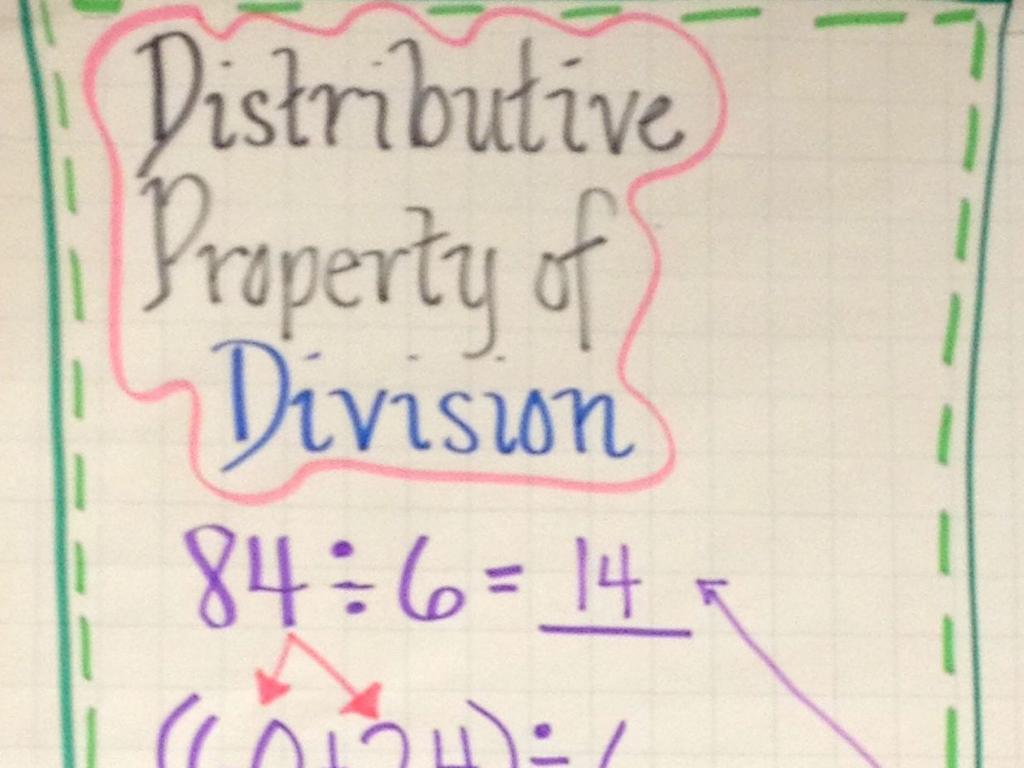Properties Of Multiplication
Subject: Math
Grade: Fifth grade
Topic: Multiplication
Please LOG IN to download the presentation. Access is available to registered users only.
View More Content
Welcome to Multiplication!
– Greetings, young mathematicians!
– Review: What is multiplication?
– Multiplication as repeated addition
– Exploring multiplication properties
– Commutative, Associative, Distributive
– Understanding through examples
– We’ll use numbers to see how these properties work!
|
Begin the class with a warm welcome to set a positive tone. Quickly review multiplication as the concept of repeated addition to refresh the students’ memory. Introduce the properties of multiplication: commutative (order doesn’t matter), associative (grouping doesn’t matter), and distributive (breaking up numbers). Use clear and simple examples to demonstrate each property in action. This will help students understand how these properties make multiplication easier and more efficient. Encourage students to think of their own examples and share them with the class to reinforce their understanding.
Exploring Multiplication
– Multiplication: A definition
– It’s a math operation to add a number to itself repeatedly.
– Multiplication in daily life
– Calculating total items in packages or groups.
– Multiplication as addition
– Instead of adding 4 + 4 + 4, multiply 4 by 3.
– Practice with real examples
– Use examples like 3 groups of 4 apples to illustrate.
|
This slide introduces the concept of multiplication to fifth graders. Begin with a clear definition, emphasizing that multiplication is a shortcut for adding the same number multiple times. Provide relatable examples, such as figuring out the total number of items in several groups, to show how multiplication is used in everyday life. Explain that multiplication is another way to do repeated addition, which they are already familiar with. Use tangible examples like groups of apples to help them visualize the concept. Encourage students to think of their own examples and share them with the class to reinforce their understanding.
Exploring the Commutative Property
– What is commutative property?
– It means you can multiply numbers in any order, like 3 x 4 = 4 x 3.
– Examples with numbers
– For instance, 5 x 2 = 2 x 5 shows the same product, 10.
– Interactive class exercise
– Find pairs in class that demonstrate this property.
– Why it’s important
|
The commutative property is a fundamental concept in multiplication, stating that numbers can be multiplied in any order without changing the result. Start by explaining the property with simple examples, such as 3 x 4 and 4 x 3. Then, provide additional examples with different numbers to solidify understanding. For the interactive exercise, have students find and write down their own examples of the commutative property from a set of numbers you provide. This activity will help students see the practical application of the property and reinforce their understanding. Emphasize that this property makes calculations easier and more flexible, which is crucial as they progress in math.
Exploring the Associative Property
– What is the associative property?
– It lets us group numbers differently without changing the product.
– Associative property with numbers
– For instance, (2 x 3) x 4 = 2 x (3 x 4) both equal 24.
– Group activity: Find examples
– In groups, create your own examples using different numbers.
– Share and discuss your findings
|
The associative property refers to the rule in multiplication that the way in which factors are grouped does not affect the product. This property allows flexibility in computation and simplifies calculations. Start by explaining the property with a clear definition and then show it in action using numerical examples. For the class activity, divide the class into small groups and have each group come up with their own examples of the associative property. Afterward, allow time for each group to share their examples with the class, fostering a collaborative learning environment. As a teacher, be prepared to guide the students through creating their examples and to clarify any misconceptions about the property.
Exploring the Distributive Property
– What is the distributive property?
– It lets you multiply a sum by multiplying each addend separately and then add the products.
– See it in action with numbers
– For example, 3 x (4 + 2) becomes (3 x 4) + (3 x 2).
– Activity: Practice with problems
– Solve 5 x (6 + 3) using the distributive property.
– Understand its usefulness
|
The distributive property is a key concept in multiplication that allows us to break down complex problems into simpler parts. Start by explaining the property with the formula a x (b + c) = (a x b) + (a x c). Provide clear numerical examples to illustrate the property in action. For the individual activity, give students a set of problems to solve using the distributive property, which will help them internalize the concept. Discuss how this property is not only useful in math but also in real-life situations, such as shopping and distributing goods. Ensure that students understand the property’s role in simplifying calculations and making multiplication easier to manage.
Understanding the Identity Property of Multiplication
– Explaining the identity property
– Any number times 1 equals the number itself, e.g., 6 x 1 = 6
– Multiplying by 1 keeps value same
– It’s like adding zero; the number doesn’t grow or shrink
– Quick quiz on identity property
– Find examples of this property in equations: 7 x 1 = ?, 1 x 9 = ?
|
The identity property of multiplication states that any number multiplied by one remains unchanged, or ‘keeps its identity’. This is a fundamental concept in multiplication, showing that the number one is the multiplicative identity. During the lesson, explain this property with several examples and ensure students understand that multiplying by one does not alter the value of a number. The quick quiz should include a mix of equations where students identify and apply the identity property, reinforcing their understanding. Encourage students to think of the number one as a mirror that reflects the same number back when multiplied.
Zero Property of Multiplication
– Understanding the zero property
– When a number is multiplied by 0, the result is always 0
– Multiplying any number by 0 equals 0
– It’s like having zero groups of a number; there’s nothing to count
– Real-life examples of zero property
– Spending $0 on any number of items, you spend nothing
– Class discussion on zero property
– Think of scenarios where you’ve used the zero property without realizing it
|
The zero property of multiplication states that any number multiplied by zero equals zero. This is an important concept for students to grasp as it is fundamental to understanding how multiplication works. Explain that multiplying by zero is like having zero groups of something – there is nothing to count. Use relatable examples such as not spending any money on items, which results in no cost. Encourage students to share their own real-life examples where they have applied the zero property, perhaps without even knowing it. This will help solidify their understanding and see the practical application of the concept.
Properties of Multiplication Review
– Recap multiplication properties
– Commutative property example
– If 3 x 4 = 12, then 4 x 3 = 12
– Associative property example
– (2 x 3) x 4 = 2 x (3 x 4)
– Distributive property example
– 5 x (2 + 3) = (5 x 2) + (5 x 3)
|
Begin with a brief review of the properties of multiplication: commutative, associative, and distributive. Use clear examples for each property to illustrate the concepts. For the interactive Q&A session, prepare questions that require students to apply each property to solve problems. This will help reinforce their understanding and allow them to demonstrate their knowledge. Encourage participation by offering positive feedback and support. The goal is to ensure students are comfortable with these properties and can use them effectively in various mathematical scenarios.
Class Activity: Multiplication Properties Game
– Understand game instructions
– Form teams for the game
– Solve problems using properties
– Use associative, commutative, and distributive properties
– Discuss solutions as a class
– Share different approaches and answers
|
This interactive class activity is designed to help students apply and understand the properties of multiplication through a game format. Begin by explaining the rules of the game and how teams will be formed. Each team will receive a set of problems that require the use of associative, commutative, and distributive properties to solve. After the teams have worked through the problems, reconvene as a class to discuss the solutions. This will allow students to learn from each other and to see different methods of applying the multiplication properties. Possible activities for different teams could include creating their own multiplication problems for another team to solve, using manipulatives to demonstrate the properties, or drawing diagrams to explain their reasoning.
Wrapping Up: Multiplication Properties
– Recap: Properties of Multiplication
– Homework: Multiplication Worksheet
Complete the provided worksheet to reinforce today’s lesson.
– Practice with Real-Life Scenarios
Use examples like doubling a recipe or combining equal groups.
– Keep Practicing at Home!
|
As we conclude today’s lesson on the properties of multiplication, it’s important to summarize the key concepts: commutative, associative, and distributive properties. Assign the worksheet on these properties to reinforce the material. Encourage students to find real-life situations where they can apply these properties, such as when doubling ingredients in a recipe or combining groups of items. Remind them that practice is essential for mastery, and doing these exercises at home will help solidify their understanding. Next class, we’ll review the homework and discuss any challenges faced.






